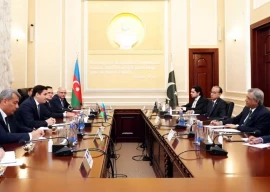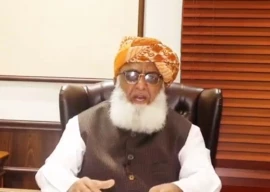
Notwithstanding its ill effects, the smog has presented a unique opportunity for both India and Pakistan to work together to deal with the problem and improve bilateral relations in the process. Given the history of Indo-Pak relations, Pakistan suggested working together under the Saarc framework.
Initiating a mechanism within the framework of Saarc to deal with issues becomes even more relevant in a situation where the environmental damage is regional and not confined to India or Pakistan alone. Multilateral cooperation could help improve the Saarc nations’ collective capacity to address issues related to climate change. It would also strengthen the capacity of member states to become more effective in responding to natural disasters through sharing information and experiences.
In November this year, Delhi witnessed its ‘worst’ case of air pollution yet, forcing it to declare a public health emergency. A thick layer of smog engulfs several cities in the country’s north due to the practice of burning of crops, and aggravated by dust and air pollution due to factory and vehicle emissions. Pakistan faces a similar dilemma. According to reports, levels of PM2.5, a particle small enough to penetrate the lungs and enter the bloodstream, reached 1,077 microgrammes per cubic metre. The safe level of PM2.5 is 60 microgrammes per cubic metre.
As expected, the first instinct of many in Pakistan was blaming India for the smog. Although the problem may have emanated in India, it has worsened due to our own negligence. According to environmentalists, dealing effectively with the problem would require Pakistan to take several measures of its own, such as planting trees and improving public transport.
Although both countries could take unilateral measures to address air pollution, until the other is also able to resolve the issue at their end, the problem would continue to haunt both. The realisation prompted the Punjab government in Pakistan to invite its Indian counterpart to work together in order to resolve the issue. The Pakistani provincial environment minister suggested that both countries should cooperate in order to find a sustainable solution to the problem under the framework of Saarc. India’s Ministry of External Affairs, however, rejected the idea outright, claiming that Saarc could function only in an atmosphere free of terrorism. The statement issued by the Indian ministry of external affairs is ironic as it talks about a “conducive environment” for talks even as it dismisses the very problem afflicting the environment.
Notwithstanding India’s stance on alleged safe havens in Pakistan, its refusal to deal with Islamabad on an issue important for both sides and adversely affecting a large population is both unreasonable and unjustified. A look at statistics reveals that pollution has killed far more people in both countries than alleged state sponsored terrorism. In 2016, there were 927 terrorist attacks in India with 337 deaths and 636 injured. In comparison, two million deaths occur in the country annually due to air pollution. Similarly in Pakistan, 3,682 people lost their lives in terrorist incidents in 2015 but up to 135,000 died due to air pollution.
India and Pakistan need to put aside their differences and work together to establish a joint mechanism to assess the causes of smog and eliminate them. Such a venture could eventually translate into something more substantive, including the creation of a bilateral framework to deal with climate change. It could offer numerous benefits to both countries.
Published in The Express Tribune, November 15th, 2017.
Like Opinion & Editorial on Facebook, follow @ETOpEd on Twitter to receive all updates on all our daily pieces.


















COMMENTS
Comments are moderated and generally will be posted if they are on-topic and not abusive.
For more information, please see our Comments FAQ